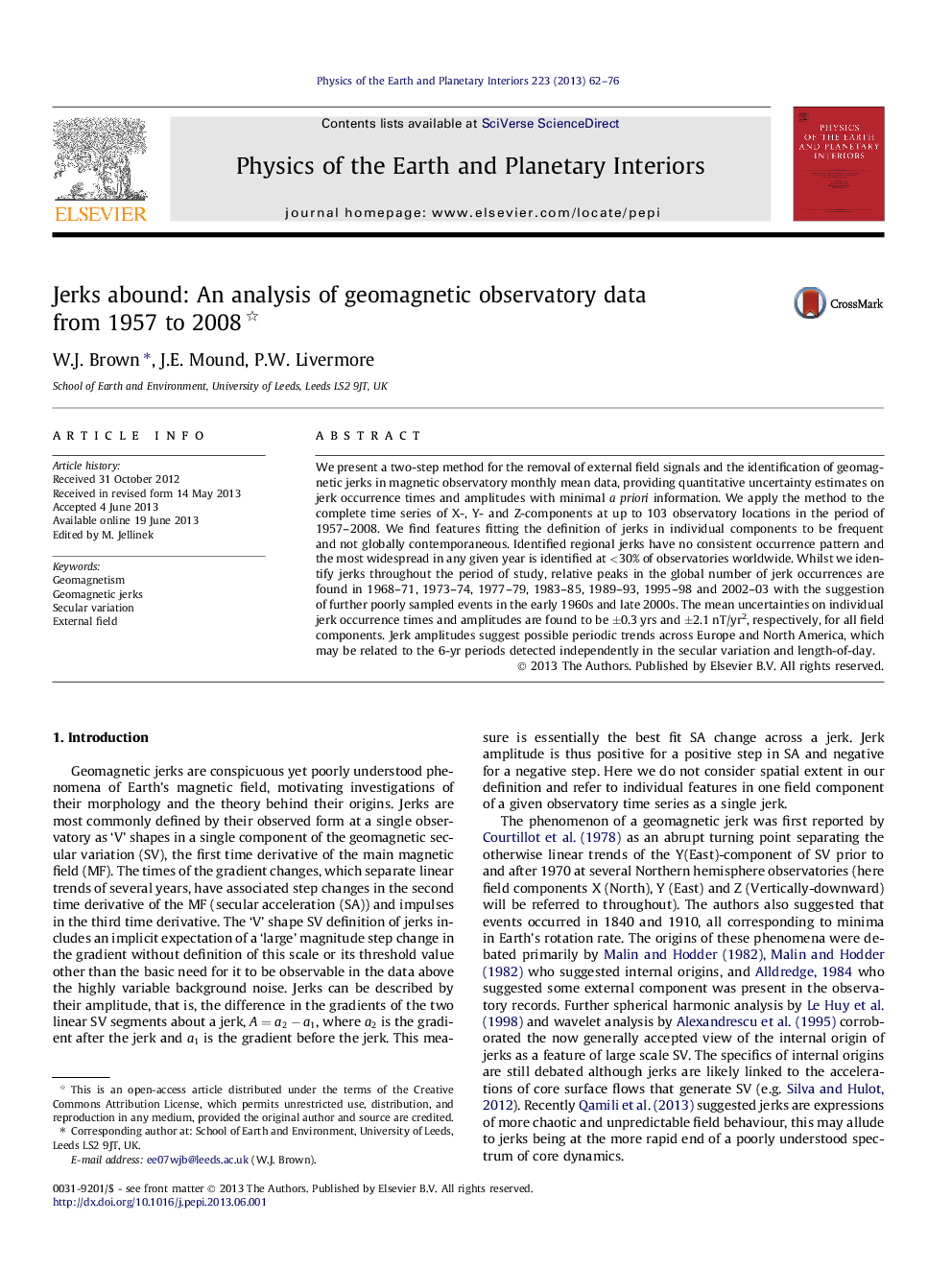| Article ID | Journal | Published Year | Pages | File Type |
|---|---|---|---|---|
| 6447561 | Physics of the Earth and Planetary Interiors | 2013 | 15 Pages |
Abstract
We present a two-step method for the removal of external field signals and the identification of geomagnetic jerks in magnetic observatory monthly mean data, providing quantitative uncertainty estimates on jerk occurrence times and amplitudes with minimal a priori information. We apply the method to the complete time series of X-, Y- and Z-components at up to 103 observatory locations in the period of 1957-2008. We find features fitting the definition of jerks in individual components to be frequent and not globally contemporaneous. Identified regional jerks have no consistent occurrence pattern and the most widespread in any given year is identified at <30% of observatories worldwide. Whilst we identify jerks throughout the period of study, relative peaks in the global number of jerk occurrences are found in 1968-71, 1973-74, 1977-79, 1983-85, 1989-93, 1995-98 and 2002-03 with the suggestion of further poorly sampled events in the early 1960s and late 2000s. The mean uncertainties on individual jerk occurrence times and amplitudes are found to be ±0.3 yrs and ±2.1 nT/yr2, respectively, for all field components. Jerk amplitudes suggest possible periodic trends across Europe and North America, which may be related to the 6-yr periods detected independently in the secular variation and length-of-day.
Related Topics
Physical Sciences and Engineering
Earth and Planetary Sciences
Geophysics
Authors
W.J. Brown, J.E. Mound, P.W. Livermore,
